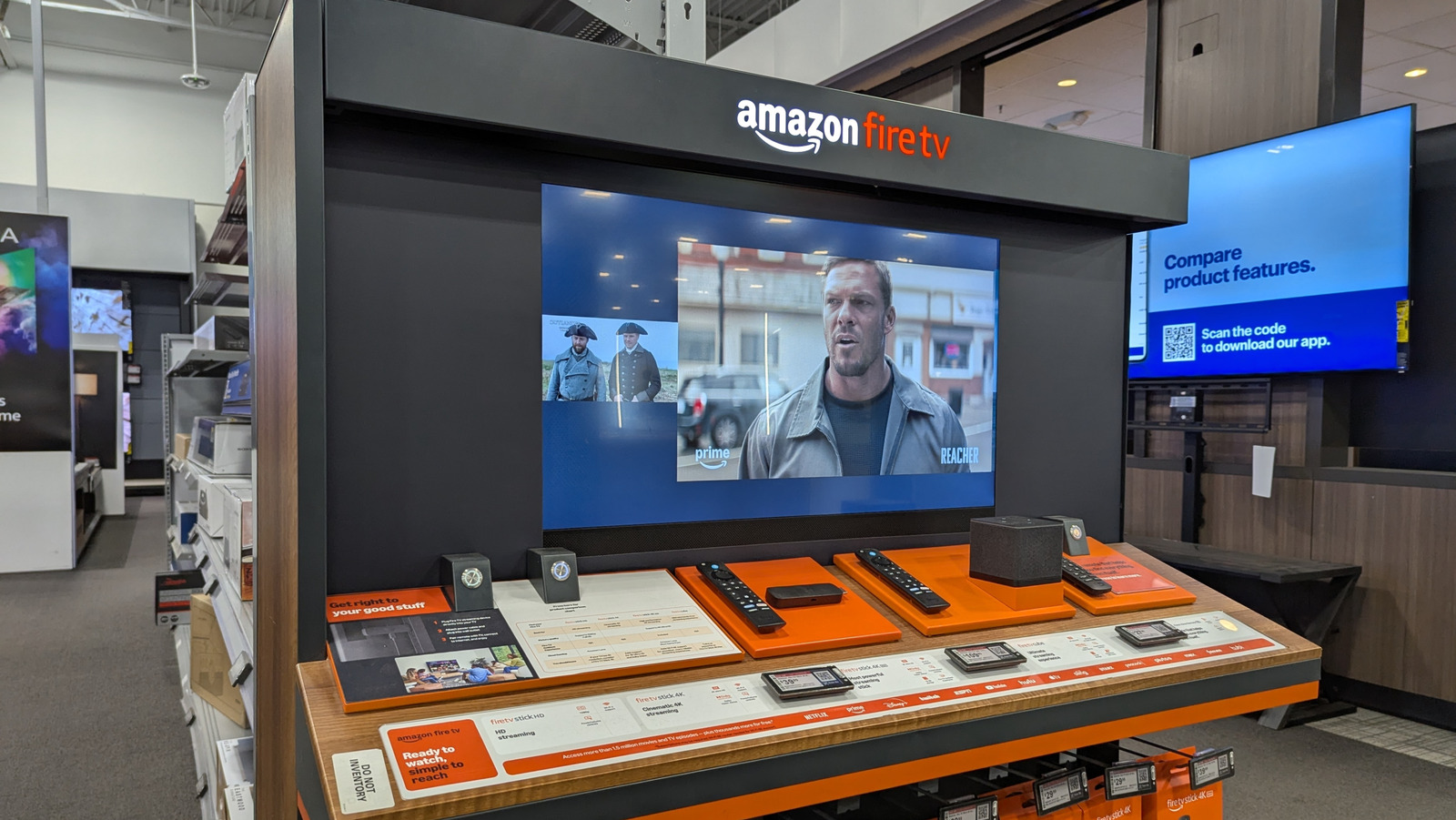We may receive a commission on purchases made from links.
In recent years, TVs have become ridiculously cheap for several reasons. The tech is improving, manufacturers are more efficient at creating them, and the market is more saturated, meaning there’s more competition overall. Taking a brief look at the evolution of modern technology helps, but it’s also not the only reason we’re seeing so many cheap options. A perfect example of this is Amazon’s Fire TV lineup. Spanning media players and a host of cheap, ultra-budget TV sets, Fire TV is one of the most competitive in the space. They’re almost always low-cost, even when there are no sales going on. But, how exactly does Amazon get away with offering them so cheap? The answer probably won’t surprise you. Data and advertising are the two biggest culprits — the data that the Fire TV smart ecosystem is collecting about your household’s usage and habits, in particular.
Amazon Fire Tv’s are cheap for the same reason why Roku TVs are so cheap. Data brokers and third parties are gorging on the data they’re receiving and buying from brands, which comes from consumers. How you browse, when you browse, what you watch, what you skip, what you buy — it’s all there, collected, collated and quantified. Beyond that, the Fire TV ecosystem is littered with ad space. There are ads on the home screen, banners all over the interface and menus, ads that play between experiences — there are even new ads tied to the generative AI Alexa upgrades. The more users viewing ads and generating data, the more money Amazon makes selling things through the Amazon shopping ecosystem, and that’s what allows the company to subsidize the cost of new tech. By offering those at a low cost, more consumers buy, and it’s a feedback loop that offers more data, more eyes on advertising, and greater financial gain.
Make Sure You Know What You’re Getting Going In
Amazon Fire TVs, both the sets and the media players, can be decent value as long as you understand what you’re getting yourself into. Four major things you should know about Fire TV devices, are that they’re licensed across several brands, not just Amazon, they’re mostly made for casual media consumption and streaming versus gaming, and you won’t be able to get away from advertisements, including when using Amazon’s virtual assistant Alexa. If any of those features are a turn off for you, and that’s more than reasonable, it might be better to look elsewhere when choosing your next TV or smart streaming platform. Also, take a brief moment to consider how long cheap TVs really last according to existing owners. You may end up replacing the set before you expect to.
Of course, there’s also the point that Amazon isn’t the only company doing this. Roku has already been called out, but other brands are also collecting data, and selling it to offset costs, including Samsung and LG – two of the most popular TV brands on the market. On some platforms, like Fire TV, you can adjust settings related to advertisements and data tracking, but you usually cannot turn it off completely. You can visit Amazon’s Security & Privacy page in the device settings to disable interest-based ads — which delivers tailored ads matched through data tracking on your interests. But again, most advertisements are there to stay along with data tracking, in general, which you agree to when first using the device or signing in to an Amazon account on the TV.








